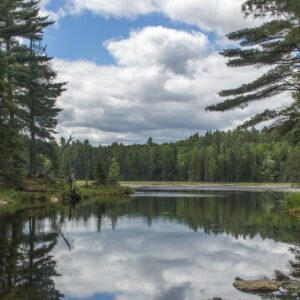Take a Moment of “Pause” to Connect with Nature
This is a guest blog by one of our founding members of Women for Nature, Tami Grantham who works for the Canadian Wildlife Service and also teaches outdoor education classes.
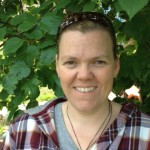
Tami Grantham, Wildlife Technician
I am honoured to have been chosen to be as a member of Women for Nature and believe passionately that women hold a powerful role in the conservation of wild spaces and places so I was delighted when asked to share my passion!
I grew up on the shores of Kluane Lake, my backyard, Kluane National Park and my youth spent immersed in the natural world. As I reflect on those times I am grateful, grateful for the values that grew with me, grateful for the connection to the natural world my youth fostered and grateful for the lessons that magnificent place taught me. Those values, connection and lessons have carried me through good and challenging times of my life and has guided my work as an adult.
It was a no brainer for me to pursue a career in Environmental Education and Science and as such I have the great pleasure of working and teaching outside almost everyday. However my greatest honour and pleasure is working to facilitate the relationship with women and nature. It is through this work I continue to foster my own connection, learn about myself and the natural world and meet fantastic, passionate women! I sincerely hope you find this engaging and helpful as you pursue your 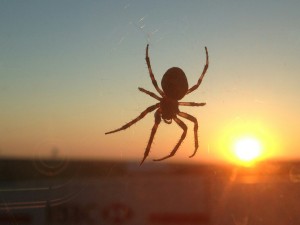 connection.
connection.
There are mountains of information floating around today about the many benefits of being connected to nature, from physical health to spiritual and emotional well being and it’s clear that being connected is ‘a good thing’. However there is very little information out there around the ‘how’ of this connection thing. Not everyone, in fact very few people have had the benefit of growing up like me and my siblings, living, learning and playing in truly wild places, and many may find the how of connecting a little daunting!
When I was asked to write this post I enthusiastically dove into it, beginning with ‘Ten Tips For Camping’. I was so proud, the piece had all my little nuggets for comfortable camping in the backcountry, safety tips and my ‘essential gear list’. The article was good and informative however, I felt like there was something missing. With the deadline looming, I was stuck but had to leave for a field shift of bird studies and I was beginning to panic! I simply could not send something out to the world that I wasn’t completely comfortable with and this piece really didn’t feel right.
So, I headed into the field with the writing and deadline weighing heavily on my mind. I love my work, in particular bird work, and while the work fascinates me the unfinished piece troubled me. The field studies offer fantastic periods of quiet listening and observation. They are conducted by a survey method called point counts which is a method used to determine; who’s there and what they are doing. They are conducted for 10 minutes, in complete silence, and typically in wonderful, forested areas. As my field partner and I stood in the middle of a beautiful, northern white 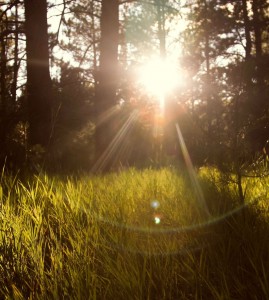 spruce forest listening intently to the singing and calling of birds both near and far, I soaked up the morning sun as it warmed my face and breathed in the fragrant smell of the spruce and aspen trees being heated by the early rays. I mapped the bird activity in my notebook as they flew and fluttered, sang and foraged around the point count station. The count period came to a close and my field partner asked, “How do you do that?” surprised, I asked, “Do what?” he pointed at my notebook with the bird activity mapped in code with arrows and symbols, depicting all the activity that had happened in the last ten minutes, “That..it’s as though you understand another language, the language of the forest!” and at that very moment inspiration hit me like a lightning bolt, the missing piece was this, the how!
spruce forest listening intently to the singing and calling of birds both near and far, I soaked up the morning sun as it warmed my face and breathed in the fragrant smell of the spruce and aspen trees being heated by the early rays. I mapped the bird activity in my notebook as they flew and fluttered, sang and foraged around the point count station. The count period came to a close and my field partner asked, “How do you do that?” surprised, I asked, “Do what?” he pointed at my notebook with the bird activity mapped in code with arrows and symbols, depicting all the activity that had happened in the last ten minutes, “That..it’s as though you understand another language, the language of the forest!” and at that very moment inspiration hit me like a lightning bolt, the missing piece was this, the how!
After a lifetime of living, working, teaching and playing in the outdoors, I often take my connection and comfort in the outdoors for granted. It’s easy to forget that others may not have had the opportunities I have to be connected and for many people, ‘Ten Tips on Camping’ may be so far from where to begin that it would just be another ‘yeah that sounds great and like a lot of fun but I just don’t know where to begin’. The comfort and connection I felt at that moment, the settled, grounded feeling, the space I could feel in my heart and mind, the ability to interpret the ‘language of the forest’, is what I was missing in my blog, it was the beginning; how to get connected to get comfortable enough to get camping!
Connection is not a thing you purchase or touch, it is a way of being. It is fundamentally simple, it does not require an enormous investment in gear or tremendous realms of knowledge or even a huge investment of time, it simply requires an interest, a willingness to listen and observe. The benefits, as listed above, can relieve stress and help provide balance in an often unbalanced world.
The next time you leave your home, pause for just a moment. Put all your expectations, to-do lists and plans for your day aside for just a moment and little by little take everything in; is it warm or perhaps there is a cool breeze? Take a deep breath, what does the air smell like? Close your eyes and listen really listen, what do you hear? Now briefly reflect on how you feel in that moment, if there is a bird singing, how does it make you feel? Does it make you feel a little lighter, or perhaps it makes you smile. The importance is not placed upon identifying and naming each piece or even finding truly wild things. The importance in this exercise is in the pause, in the moment that it takes to simply be, and observe the things that you may have otherwise overlooked. As you thenmove into the day ahead, in moments of stress, frustration or difficulty even fatigue, reflect on that moment, let it carry you through those difficult times. Be mindful that there is beauty everywhere, all we have to do is look, listen, taste and feel. These small moments of pause will soon become habit, opening your mind to your natural curiosity, and you may find yourself asking questions about the things you observe. What is that pretty little flower growing up through the crack in the sidewalk? Or, who was that bird singing in the park across the street? You may also find yourself stealing pauses at the bus stop, your lunch break or even when you are stuck in traffic!
[one_third]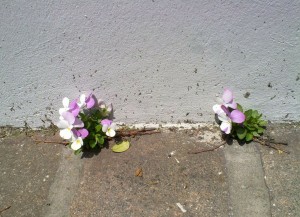 [/one_third] [one_third]
[/one_third] [one_third]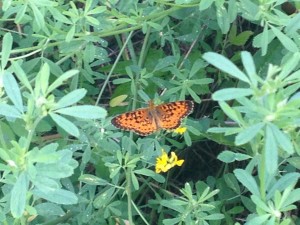 [/one_third] [one_third_last]
[/one_third] [one_third_last]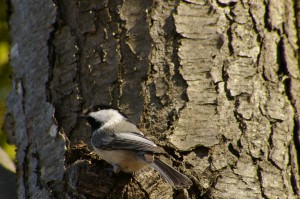 [/one_third_last]
[/one_third_last]
These moments of pause help us personally become more centered and better able to tackle the tough stuff, however there is also a great global benefit, and need, for nature connection. As we grow and strengthen our connection using practices like the above, our values and passion for the things and spaces we observe will also grow. When these values and passions grow, so too does our conservation ethic, which then becomes a voice for the larger conservation and protection conversation. The key to conserving and protecting the environments, that we rely upon for our existence, is not complicated or technical. It is awareness, passion and connection that starts with a pause.
Get curious today, heighten your awareness, dance in the rain, soak up the energy of the natural world, I promise you won’t regret it! If you’d like to learn more, follow me on Facebook, join me for one of our workshops and stay tuned for more blog posts!




